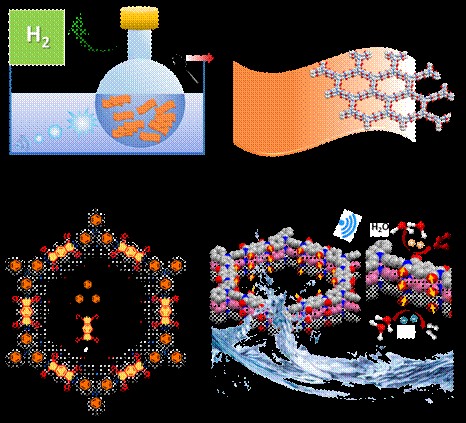Innovative Metal-Free Catalyst for Green Hydrogen Production through Mechanical Energy Harvesting
Key Ideas
- Researchers in India developed a metal-free porous organic catalyst for efficient H2 production using mechanical energy, contributing to sustainable energy solutions.
- This breakthrough in piezocatalysis for water splitting by JNCASR scientists opens new possibilities for high-yield green H2 production with minimal environmental impact.
- The COF developed by Prof. Maji's team demonstrated superior piezocatalytic activity, outperforming traditional metal-based ferroelectric materials and oxide-based inorganic catalysts.
- Collaborative efforts with researchers from Indian and international institutions further enhanced the interdisciplinary study on green hydrogen production through mechanical energy harvesting.
In a significant step towards sustainable energy solutions, researchers in New Delhi, India have unveiled a groundbreaking development in green hydrogen production. A metal-free porous organic catalyst has been engineered for efficient H2 generation through the innovative approach of harvesting mechanical energy. This advancement comes at a crucial time when the global shift towards renewable energy sources like green hydrogen is imperative to combat the impact of fossil fuels on climate change.
The National Green Hydrogen Mission initiated by the Government of India underscores the strategic importance of green hydrogen in driving a sustainable energy transition. The study by Professor Tapas K. Maji and his team at JNCASR Bengaluru showcases a novel covalent organic framework (COF) that utilizes piezocatalysis for water splitting, resulting in the production of hydrogen with exceptional efficiency.
The COF structure, built from organic donor and acceptor molecules, exhibits ferrielectric ordering, enhancing its piezocatalytic activity by providing an increased number of charge carriers at pore surfaces. This unique design allows for efficient water molecule diffusion and utilization of charge carriers, leading to ultra-high hydrogen production yields surpassing traditional ferroelectric and inorganic catalysts.
By leveraging the properties of the COF system, including strong charge transfer and dipolar ordering, the research team has achieved a remarkable breakthrough in green hydrogen production. The collaboration between researchers from JNCASR and other institutions has further enriched the interdisciplinary study, emphasizing the potential of cost-effective, metal-free catalysts in driving the green hydrogen economy.
This innovative approach not only offers a sustainable solution for hydrogen production but also highlights the significance of harnessing mechanical energy for renewable energy applications. The findings pave the way for future advancements in green hydrogen technology, positioning India as a global leader in the transition towards a clean and sustainable energy future.
Topics
Fuel Cells
Renewable Energy
Innovation
Energy Transition
Research
Sustainable Development
Catalysis
Government Initiative
Environmental Science
Latest News
